Posted on September 23rd, 2015 by Mary Lord
 The year is 2032 and your middle-school explorers have successfully achieved a manned mission to Mars! After establishing criteria to help look for signs of life, they conduct a scientific experiment in which they evaluate three “Martian” soil samples and determine if any contains life.
The year is 2032 and your middle-school explorers have successfully achieved a manned mission to Mars! After establishing criteria to help look for signs of life, they conduct a scientific experiment in which they evaluate three “Martian” soil samples and determine if any contains life.
Read More
Filed under: Class Activities, Grades 6-8, Grades 6-8, Lesson Plans | Comments Off on Are We Alone?
Tags: Aerospace, astronaut, Bioscience, Chemistry, Class Activities, exploration, Grades 6-8, Lesson Plan, life, manned mission to Mars, Mars, NASA, Space
Posted on May 12th, 2015 by Mary Lord
 In this activity, student teams in grades 8 and up learn about the engineering design process and physical forces by building a bridge from a single sheet of paper and up to five paper clips that will span 20 cm and support the weight of 100 pennies. Like real engineers, teams also have limited budgets and must make trade-offs in materials.
In this activity, student teams in grades 8 and up learn about the engineering design process and physical forces by building a bridge from a single sheet of paper and up to five paper clips that will span 20 cm and support the weight of 100 pennies. Like real engineers, teams also have limited budgets and must make trade-offs in materials.
Read More
Filed under: Class Activities, Grades 6-8, Grades 6-8, Grades 9-12, Grades 9-12 | Comments Off on Paper Penny Bridge
Tags: applied mathematics, Bridge Design, bridges, Civil Engineering, Class Activities, forces, Grades 6-8, Grades 9-12, Lesson Plan, Physics
Posted on February 22nd, 2015 by Mary Lord
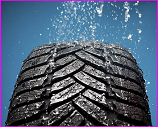 In this hands-on activity, teams of students in grades 3 to 12 learn how engineers design tire treads to increase safety and reliability, then follow the design process to construct, test, and evaluate treads sculpted from clay that will be safe when driving in heavy rain.
In this hands-on activity, teams of students in grades 3 to 12 learn how engineers design tire treads to increase safety and reliability, then follow the design process to construct, test, and evaluate treads sculpted from clay that will be safe when driving in heavy rain.
Read More
Filed under: Class Activities, Grades 6-8, Grades 6-8, Grades 9-12, Grades 9-12, Grades K-5, Grades K-5, Lesson Plans | Comments Off on How the Rubber Meets the Road
Tags: Automotive engineering, car, Class Activities, Engineering Design, Lesson Plan, safety, tire, Transportation, tread
Posted on September 18th, 2014 by Mary Lord
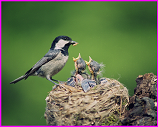 Students in grades 2 to 4 learn about wildlife habitats, environmental engineering, and the complexities of nest construction by attempting to design and build a nest themselves.
Students in grades 2 to 4 learn about wildlife habitats, environmental engineering, and the complexities of nest construction by attempting to design and build a nest themselves.
Read More
Filed under: Class Activities, Grades K-5, Grades K-5, Lesson Plans | Comments Off on Think Like a Bird!
Tags: Biology, birds, Class Activities, construction, Design, ecology, Environmental Engineering, Grades K-5, Great Sand Dunes National Park, habitat, Lesson Plan, material properties, National Park Service, nest, wilderness, wildlife
Posted on July 22nd, 2014 by Mary Lord
 MIT BLOSSOMS, a blended-learning consortium for high school STEM educators, houses a video library with more than 100 free science, engineering, and math lessons taught by experts in the field – and searchable by national and state standards, grade level, and content.
MIT BLOSSOMS, a blended-learning consortium for high school STEM educators, houses a video library with more than 100 free science, engineering, and math lessons taught by experts in the field – and searchable by national and state standards, grade level, and content.
Read More
Filed under: K-12 Outreach Programs, Special Features, Web Resources | Comments Off on Video STEM Lessons from MIT
Tags: learning standards, Lesson Plan, math standards, MIT, MIT Blossoms, Next Generation Science Standards, NGSS, Resources for Teachers, science standards, STEM education, STEM videos
Posted on May 20th, 2014 by Mary Lord
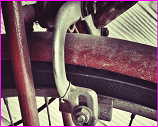 In this activity, students in grades 3 to 6 learn about force and friction by examining how basic rim bicycle brakes work and discussing the advantages of various designs. They then use low cost materials to devise a simple braking system, suggest improvements to current bicycle brake designs, and present their recommended changes to the class.
In this activity, students in grades 3 to 6 learn about force and friction by examining how basic rim bicycle brakes work and discussing the advantages of various designs. They then use low cost materials to devise a simple braking system, suggest improvements to current bicycle brake designs, and present their recommended changes to the class.
Read More
Filed under: Class Activities, Grades 6-8, Grades 6-8, Grades K-5, Grades K-5 | Comments Off on Give Me a Brake!
Tags: bicycle, Class Activities, Design, Energy, Engineering Design, friction, gears, Grades 6-8, Grades K-5, Lesson Plan, motions and forces
Posted on April 21st, 2014 by Mary Lord
 In this activity, students in grades 9-11 learn how engineers harness the energy of the wind by following the engineering design process to create and test two prototype wind turbines to see which works best. They also learn about where to place a wind turbine for maximum effectiveness, and to weigh the advantages and disadvantages compared with other energy sources.
In this activity, students in grades 9-11 learn how engineers harness the energy of the wind by following the engineering design process to create and test two prototype wind turbines to see which works best. They also learn about where to place a wind turbine for maximum effectiveness, and to weigh the advantages and disadvantages compared with other energy sources.
Read More
Filed under: Class Activities, Grades 9-12, Grades 9-12, Lesson Plans | Comments Off on Wind Power for Your Home
Tags: Alternative Energy, Civil Engineering, Class Activities, efficiency, Environmental Engineering, Environmental science, Grades 9-12, Green Technology, kinetic energy, Lesson Plan, Mechanical engineering, renewable energy, STEM education, Sustainability, turbine, wind power
Posted on November 27th, 2013 by Mary Lord
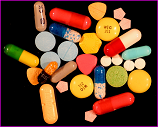 Student teams in grades 6-8 reinforce their knowledge of the digestive system and explore the concepts of simulation and the engineering design process by developing a pill coating that can withstand the churning and acidic environment of the stomach. They test the coating’s durability using a clear soda to simulate gastric acid.
Student teams in grades 6-8 reinforce their knowledge of the digestive system and explore the concepts of simulation and the engineering design process by developing a pill coating that can withstand the churning and acidic environment of the stomach. They test the coating’s durability using a clear soda to simulate gastric acid.
Read More
Filed under: Class Activities, Grades 6-8, Grades 6-8, Lesson Plans | 2 Comments »
Tags: Biology, Biomedical, Chemical Engineering, Class Activities, coating, digestion, Grades 6-8, Human Body, Lesson Plan, Manufacturing Engineering, Materials Engineering, medicine, pill
Posted on October 24th, 2013 by Mary Lord
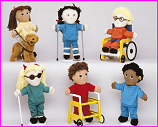 Students in grades 6 to 8 gain an understanding of physical limitations and the biomedical engineering design process by performing a variety of tasks without using their thumbs, eyes, or legs, then working in teams to create or improve and adaptive device.
Students in grades 6 to 8 gain an understanding of physical limitations and the biomedical engineering design process by performing a variety of tasks without using their thumbs, eyes, or legs, then working in teams to create or improve and adaptive device.
Read More
Filed under: Class Activities, Grades 6-8, Grades 6-8, Grades 9-12, Grades 9-12, Lesson Plans | Comments Off on Seeing the World Through a Different Lens
Tags: adaptive technologies, assistive technologies, bioengineering, biomechanical engineering, Class Activities, Grades 6-8, Lesson Plan, Mechanical engineering, Prosthetics, students with disabilities
 The year is 2032 and your middle-school explorers have successfully achieved a manned mission to Mars! After establishing criteria to help look for signs of life, they conduct a scientific experiment in which they evaluate three “Martian” soil samples and determine if any contains life.
The year is 2032 and your middle-school explorers have successfully achieved a manned mission to Mars! After establishing criteria to help look for signs of life, they conduct a scientific experiment in which they evaluate three “Martian” soil samples and determine if any contains life.








 In this activity, student teams in grades 8 and up learn about the engineering design process and physical forces by building a bridge from a single sheet of paper and up to five paper clips that will span 20 cm and support the weight of 100 pennies. Like real engineers, teams also have limited budgets and must make trade-offs in materials.
In this activity, student teams in grades 8 and up learn about the engineering design process and physical forces by building a bridge from a single sheet of paper and up to five paper clips that will span 20 cm and support the weight of 100 pennies. Like real engineers, teams also have limited budgets and must make trade-offs in materials. In this hands-on activity, teams of students in grades 3 to 12 learn how engineers design tire treads to increase safety and reliability, then follow the design process to construct, test, and evaluate treads sculpted from clay that will be safe when driving in heavy rain.
In this hands-on activity, teams of students in grades 3 to 12 learn how engineers design tire treads to increase safety and reliability, then follow the design process to construct, test, and evaluate treads sculpted from clay that will be safe when driving in heavy rain. Students in grades 2 to 4 learn about wildlife habitats, environmental engineering, and the complexities of nest construction by attempting to design and build a nest themselves.
Students in grades 2 to 4 learn about wildlife habitats, environmental engineering, and the complexities of nest construction by attempting to design and build a nest themselves. MIT BLOSSOMS, a blended-learning consortium for high school STEM educators, houses a video library with more than 100 free science, engineering, and math lessons taught by experts in the field – and searchable by national and state standards, grade level, and content.
MIT BLOSSOMS, a blended-learning consortium for high school STEM educators, houses a video library with more than 100 free science, engineering, and math lessons taught by experts in the field – and searchable by national and state standards, grade level, and content. In this activity, students in grades 3 to 6 learn about force and friction by examining how basic rim bicycle brakes work and discussing the advantages of various designs. They then use low cost materials to devise a simple braking system, suggest improvements to current bicycle brake designs, and present their recommended changes to the class.
In this activity, students in grades 3 to 6 learn about force and friction by examining how basic rim bicycle brakes work and discussing the advantages of various designs. They then use low cost materials to devise a simple braking system, suggest improvements to current bicycle brake designs, and present their recommended changes to the class. In this activity, students in grades 9-11 learn how engineers harness the energy of the wind by following the engineering design process to create and test two prototype wind turbines to see which works best. They also learn about where to place a wind turbine for maximum effectiveness, and to weigh the advantages and disadvantages compared with other energy sources.
In this activity, students in grades 9-11 learn how engineers harness the energy of the wind by following the engineering design process to create and test two prototype wind turbines to see which works best. They also learn about where to place a wind turbine for maximum effectiveness, and to weigh the advantages and disadvantages compared with other energy sources. Student teams in grades 6-8 reinforce their knowledge of the digestive system and explore the concepts of simulation and the engineering design process by developing a pill coating that can withstand the churning and acidic environment of the stomach. They test the coating’s durability using a clear soda to simulate gastric acid.
Student teams in grades 6-8 reinforce their knowledge of the digestive system and explore the concepts of simulation and the engineering design process by developing a pill coating that can withstand the churning and acidic environment of the stomach. They test the coating’s durability using a clear soda to simulate gastric acid. Students in grades 6 to 8 gain an understanding of physical limitations and the biomedical engineering design process by performing a variety of tasks without using their thumbs, eyes, or legs, then working in teams to create or improve and adaptive device.
Students in grades 6 to 8 gain an understanding of physical limitations and the biomedical engineering design process by performing a variety of tasks without using their thumbs, eyes, or legs, then working in teams to create or improve and adaptive device.